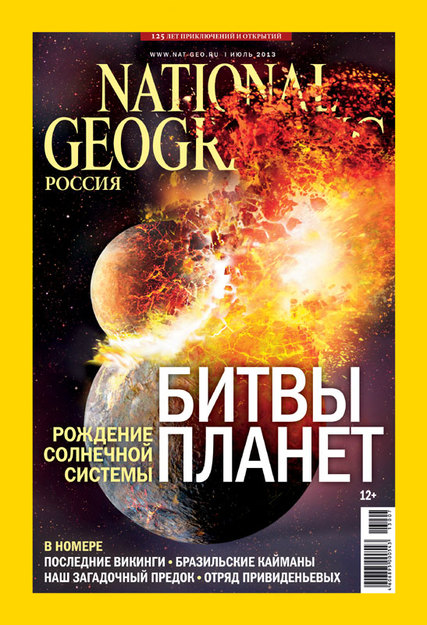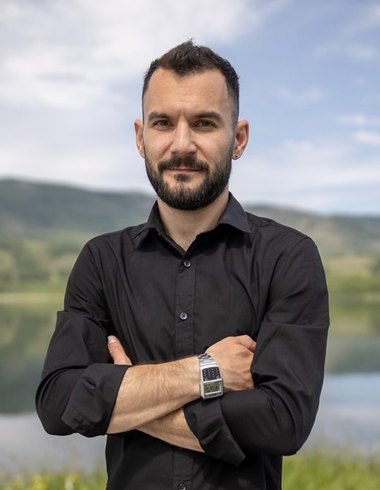National Geographic Russia in July

In the July issue of National Geographic Russia readers will learn that the moon might have been formed by the spray of molten rock that was thrown into orbit when a protoplanet the size of Mars slammed into Earth — all part of the violent and turbulent youth experienced by our solar system.
Also in this issue:
A paradise for caimans. The lush growth along the banks of the Paraguay River in Brazil is inhabited by the world’s largest population of caimans.
Common roots. Every type of living organism is unique, but they all share common genes.
Daniel Kish: Batman. Blinded in his early childhood, Kish rides a bike and orients himself in space with the aid of echolocation — just like a bat.
The vanishing walking stick. In a world where all creatures are subject to a brutal struggle for survival, walking stick insects have found the perfect form of self-protection — they have become invisible.
Denisova bone fragment. A tiny fossil discovered in the Denisova Cave in the Altai is helping scientists piece together the “genetic recipe of modern man.”
White sea raven. This was the name given to the cormorant by Georg Steller, a member of the Vitus Bering expedition that discovered the Commander Islands.
Tajik coal. Can you imagine that today, in the age of nanotechnology, people would use hand picks to mine enough coal to survive the long, cold winters? That is the harsh reality for residents of the kishlak, or villages in the Fann Mountains of Tajikistan.
The last Vikings. Despite the international whaling moratorium, Norwegian whalers are fighting for the right to hunt the animals on inland waters as their ancestors have done for centuries.
The July issue of National Geographic Russia was released for sale on July 2.


